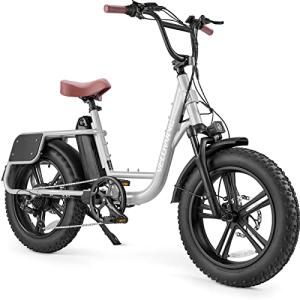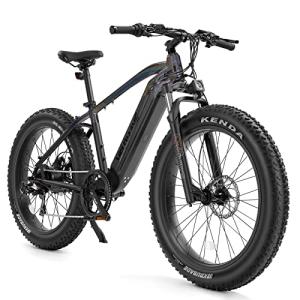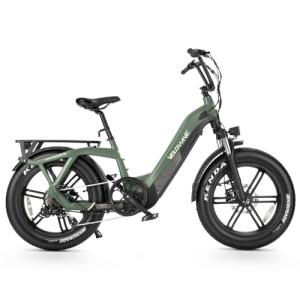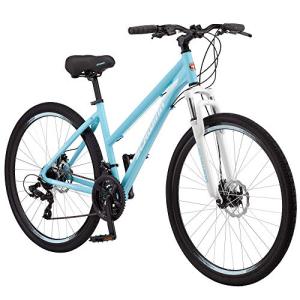Help your teen ride smart and stay safe on their e-bike adventure
E-bikes are gaining popularity among teenagers. Parents must balance their children's desire for freedom with the need to keep them safe.
The rise of electric bikes for young riders is exciting, but worries parents. It's essential to understand the basics of e-bike technology and safety concerns.

E-bikes come in three classes: Class 1, Class 2, and Class 3. Each has its own abilities and rules. Knowing local laws about e-bikes helps avoid accidents.
Key Takeaways
- Understand the different classes of e-bikes and their capabilities.
- Familiarize yourself with local e-bike laws and regulations.
- Educate your teen on e-bike safety tips and best practices to ensure their safety.
- Ensure your teen wears proper safety gear, including a helmet.
- Discuss the importance of responsible e-bike riding.
Understanding E-Bikes and Their Unique Safety Challenges
E-bikes are gaining popularity among teens, and parents need to be aware of their safety concerns. E-bikes differ from regular bikes, raising new safety concerns.
How E-Bikes Differ from Traditional Bicycles
E-bikes have motors that help them go faster than regular bikes. This speed can be hard for new riders to manage. It's key for teens to learn how to ride e-bikes safely.
The power and speed of e-bikes mean riders must watch out for dangers more closely. They need to be ready for anything that might happen.
Common E-Bike Accidents Among Teens
Teens on e-bikes face numerous dangers, including crashes with cars, pedestrians, and obstacles in their path. Losing control, often on hills or when braking suddenly, is a significant reason for accidents. To avoid these, teens should learn how to brake right and handle tough paths.
Why Teens Need Special Safety Guidance
Teens need special help to stay safe on e-bikes because these bikes are different from regular ones. Parents should teach their teens how to ride e-bikes safely. This includes riding smart, following rules, and staying alert.
By guiding their teens, parents can make them more confident and safe on e-bikes.
Essential Safety Gear for Teen E-Bike Riders
It's essential to ensure that teen e-bike riders have the proper safety gear. This includes the right equipment and safe riding habits. It helps keep them safe on the roads.
Helmets and Head Protection Standards
A good helmet is the most important safety item for teen e-bike riders. Safety experts say that a helmet can significantly reduce the risk of head injury in accidents. Ensure the helmet fits well and meets the safety standards set by organizations such as the Consumer Product Safety Commission (CPSC).

Visibility Equipment: Lights, Reflectors, and Bright Clothing
Being visible is crucial to e-bike safety. Teen riders should wear lights and reflectors to increase their visibility. Wearing bright or reflective clothing also helps, as it increases their visibility in the dark.
Protective Gear: Gloves, Pads, and Appropriate Footwear
There's more to safety than just helmets and lights. Gloves, knee pads, and sturdy shoes are also important. Gloves help with grip, and knee pads protect against scrapes and breaks. Shoes with a good grip help riders stay in control.
By wearing the right gear, teen e-bike riders can significantly reduce their risk of injury. As a parent, ensuring your teen has the right safety gear is a crucial part of teaching them how to ride safely.
Teaching Teens E-Bike Safety: A Guide for Parents
As e-bikes gain popularity, parents must educate their teens about safety. It's important for parents to help their teens learn safe riding habits. This is crucial as e-bikes become more common among teens.
Creating a Safety Agreement with Your Teen
Making a safety agreement is a great way to ensure your teen knows and follows e-bike safety rules. This agreement should cover the basics, such as wearing protective gear and following traffic laws. It should also mention where it's okay to ride. By making this agreement together, you can help your teen feel more responsible and gain a better understanding of the rules.

Demonstrating Proper Riding Techniques
Showing your teen how to ride safely is key. Teach them how to handle different terrains and weather, and how to navigate through traffic. This includes how to brake smoothly, check intersections, and stay aware of their surroundings.
Handling Different Terrain and Weather Conditions
Teach your teen to adjust their riding style for different terrains and weather conditions. This means learning to ride on hills, in rain, or on uneven paths. Proper tire pressure and braking techniques are essential for maintaining control.
Navigating Traffic and Following Road Rules
Teaching your teen to ride safely in traffic is crucial. They should learn to follow road rules, like obeying traffic signals and using hand signals. Practicing these skills in a safe place helps build their confidence.
Practicing in Safe Environments Before Street Riding
Before riding on the streets, let your teen practice in safe places, such as empty parking lots. This lets them get used to riding without the dangers of busy traffic. Practicing in a safe area helps them feel more comfortable and skilled on their e-bikes.
Ongoing Supervision and Safety Enforcement
To keep teens safe on e-bikes, parents must stay involved. They need to set clear rules, use tech for tracking, and keep the e-bike in top shape.
Setting Clear Boundaries and Riding Limits
Setting clear rules and limits is key for teen e-bike safety. Parents should decide where and when their teen can ride. This includes setting curfews and areas they can't go.
This way, teens know what's expected of them. It helps lower the chance of accidents.
Using Technology for Safety Monitoring
Technology plays a significant role in keeping e-bikes safe. GPS tracking devices let parents see where their teen is and how fast they're going. Some e-bikes even feature safety features such as crash detection and alerts.
Regular Maintenance Checks for Safety
Regular maintenance is vital for a safe e-bike. Parents should regularly check the brakes, tire pressure, and battery. Having a professional inspect the e-bike periodically is also a good idea.
A well-kept e-bike is safer to ride. It's less likely to be in an accident.
By keeping a close eye and enforcing safety rules, parents can greatly reduce risks. This approach not only makes riding safer but also teaches teens how to ride responsibly.
Conclusion
Teaching teens about e-bike safety is a big job. It requires education, supervision, and the proper safety equipment. Understanding how e-bikes work and their associated safety concerns helps parents keep their teens safe while they enjoy riding.
A good e-bike safety guide for parents includes making a safety pact, demonstrating proper riding techniques, and practicing in safe areas. It's also important to keep an eye on them and check the bike regularly.
By following the tips in this guide, parents can help their teens learn to ride safely. For more safety tips and resources, parents can look online or join local safety programs.
FAQ
Q: What are the different classes of e-bikes, and how do they impact safety?
A: E-bikes are divided into three classes: Class 1, Class 2, and Class 3. Each class has its own rules and safety concerns. Understanding these differences helps parents and teens recognize the unique safety needs of each type.
Q: How can parents ensure their teen is wearing the right safety gear while e-biking?
A: Parents should make sure their teen wears a helmet that meets safety standards. They should also use lights and reflectors for visibility. Bright or reflective clothing is also important. Protective gear like gloves and knee pads can prevent injuries.
Q: What steps can parents take to teach their teens e-bike safety?
A: Parents can start by making a safety agreement with their teen. They should show them how to ride safely. It's also important to practice in a safe area before riding on streets.
Q: How can parents monitor their teen's e-bike usage and ensure their safety?
A: Parents can set rules and limits for riding. They can use GPS to track their teens' rides. Regular checks on the e-bike's condition are also crucial for safety.
Q: What are some common e-bike accidents among teens, and how can they be prevented?
A: Teens often have accidents on hills or when braking suddenly. Teaching them how to brake smoothly and navigate traffic can prevent these accidents.
Q: Why is ongoing supervision important for teen e-bike safety?
A: Ongoing supervision helps parents stay involved and alert. It prevents accidents and ensures their teen's safety while riding.
Q: How can parents educate themselves about e-bike safety laws and regulations in their area?
A: Parents can research local laws and regulations about e-bikes. This includes any specific rules for their teen's e-bike.
Q: What are some best practices for teaching teens e-bike safety?
A: Best practices include making a safety agreement and showing them how to ride. Practicing in safe areas and supervising are also key.
Q: How can parents help their teens develop good e-bike safety habits?
A: Parents can set a good example and supervise their teen. Ensuring they wear proper safety gear is also important.
Disclaimer
This document is provided for general information purposes only and should not be relied upon as providing legal advice, technical, or specific operational guidance to the reader, whether as to the practices described in the document or the applicable legal requirements and regulations. just electric bikes.com expressly disclaims any responsibility for liability arising from or related to the use or misuse of any information in this document.







